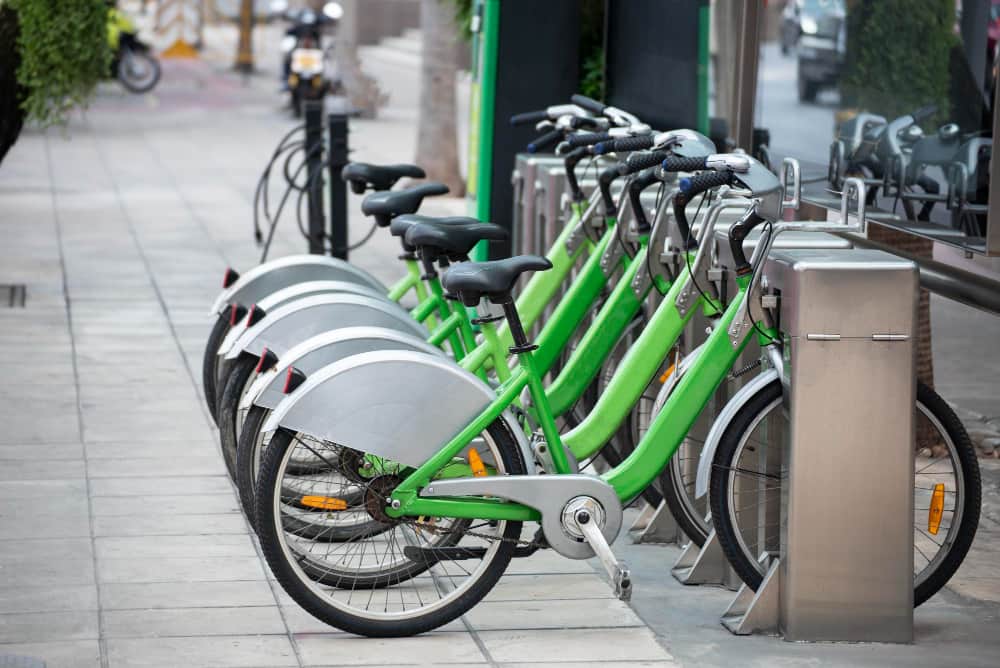Bikeshare Is Booming—But Costs Are Rising. Here’s How Operators Can Win on Unit Economics

Bikeshare is more popular than ever. Cities report record trips and expanding service areas—great news for mode shift and climate goals. But a recurring theme in industry conversations is clear: popularity doesn’t automatically produce profit. Costs are rising across hardware, energy, rebalancing, maintenance, theft/vandalism, insurance, and platform overhead. E-bikes amplify both the upside (ridership) and the downside (OPEX) if not managed carefully.
Importantly for the United States, rider-facing prices have also been trending upward—many large systems have adjusted per-minute rates, added or increased e-bike surcharges and unlock fees, and revised day-pass or membership pricing. This mirrors the underlying cost pressures highlighted in recent public discussions and reporting: operating an e-bike fleet simply costs more than pedal-only bikes unless the system is optimized end-to-end.
Grounded in these discussions and our field experience across multiple U.S. and international cities, this post unpacks where costs come from—and the concrete steps operators can take to improve unit economics without compromising rider experience.
Why “More Trips” ≠ “More Profit”
- Higher marginal costs with e-bikes: More complex components, heavier frames, and larger batteries mean faster wear and pricier replacements as utilization rises.
- Rebalancing intensifies with success: Peak directional flows (commute/tourism) demand more frequent bike and battery moves, pushing up labor and vehicle costs.
- Price ceilings: Public expectations and policy constraints limit fare increases, even as OPEX climbs.
- Faster depreciation and losses: Theft, vandalism, weather, and accidental damage shorten asset life.
- Compliance and platform costs: Data reporting, insurance, and integrations add ongoing overhead.
Cost Structure—Where the Money Goes
- Vehicles & depreciation: Robust frames and components are essential but expensive; poor serviceability multiplies downtime.
- Batteries & energy: Pack cost, cycle life management, charging logistics, and peak pricing all matter.
- Rebalancing & logistics: Hub-to-hub moves, micro-warehouse throughput, driver time, and routing permissions.
- Maintenance & labor: Non-standard parts and slow tear-down drive cost per fix.
- Theft/vandalism & insurance: Higher risk in dockless or semi-dock models if controls are weak.
- IT & compliance: Data pipelines, city portals, customer support, and platform fees.
Where Operators Commonly Leak OPEX
- Deep-cycling batteries to 0–100% instead of optimized 20–80% windows, accelerating degradation.
- SKU sprawl in hardware, inflating inventory and training costs.
- Reactive maintenance rather than health-score triggers and predictive alerts.
- Under-instrumented theft prevention (weak locks, exposed antennas, no geofencing/alerts).
- Rebalancing without demand forecasting and multi-objective routing, leading to high deadhead miles.
- Discount strategies that boost trips but weaken contribution margin.
Our Playbook to Reduce OPEX
1) Standardize the fleet
- Unify key modules—motor, controller, brakes, lighting, smart lock, and IoT—to shrink the spare-parts pool.
- Design for serviceability: modular subassemblies that swap in under 30 minutes.
2) Battery chemistry and lifecycle management
- Prefer LFP where feasible for stability and longer cycle life; pair with transparent SOH tracking.
- Use BMS telemetry (temperature, IR, cycle count, depth of discharge) to enforce charging windows and flag abnormal packs.
3) Charging and swap network optimization
- Build micro-depots with a 2–3 km service radius to cut white-space travel and daytime emergency swaps.
- Exploit off-peak tariffs with scheduled charging; target “good enough” SOC for redeployments instead of 100%.
4) Rebalancing powered by prediction
- Hourly demand forecasts (weather, events, weekday/weekend) feeding multi-stop routes that minimize deadhead, lateness, and penalties.
- User incentives such as Walk‑to‑Ride, Ride‑to‑Zone, and off-peak return bonuses to crowdsource last-meter balancing.
5) Preventive maintenance and parts strategy
- Health scores from IoT (vibration, brake wear proxies, tire pressure anomalies, lock faults) auto-create work orders.
- Remanufacturing and “core return” programs with suppliers to reduce cash burn on spares.
6) Theft, vandalism, and risk control
- Hardened electronic locks with tamper detection, hidden antennas, anti-theft fasteners, and motion alerts.
- Geo-fencing, delayed-offline detection, and community recovery rewards to speed retrieval.
7) Operations software and automation
- Unified ops console: tickets, inventory, schedules, routes, micro-depot throughput, and cost accounting.
- APIs to reduce reliance on high-fee platforms; bring analytics, payments, and support in-house over time.
Pilot Plan and KPIs
Run a 12-week pilot combining micro-depots, swap workflows, user incentives, and predictive routing in 1–2 distinct zones (commuter vs. tourist). Track:
- Bike availability/health rate > 96%
- Operating cost per trip ↓ 20–30%
- Deadhead km/trip ↓ 25%+
- Battery life (at equal SOH threshold) ↑ 15–25%
- Theft/vandalism loss rate ↓ 30%+, average recovery < 48 hours
- Subscriber share and retention ↑
Bottom Line
E-bikes grow ridership—and complexity. The path to sustainable bikeshare is systemic cost control: standardized, serviceable hardware; energy-aware battery operations; data-driven rebalancing; preventive maintenance; robust risk controls; and revenue models that prioritize subscribers. With the right blueprint, operators can scale while improving unit economics.
Want help tailoring this playbook to your city? Talk to TXED about hardware, charging, and software options that fit your market.
